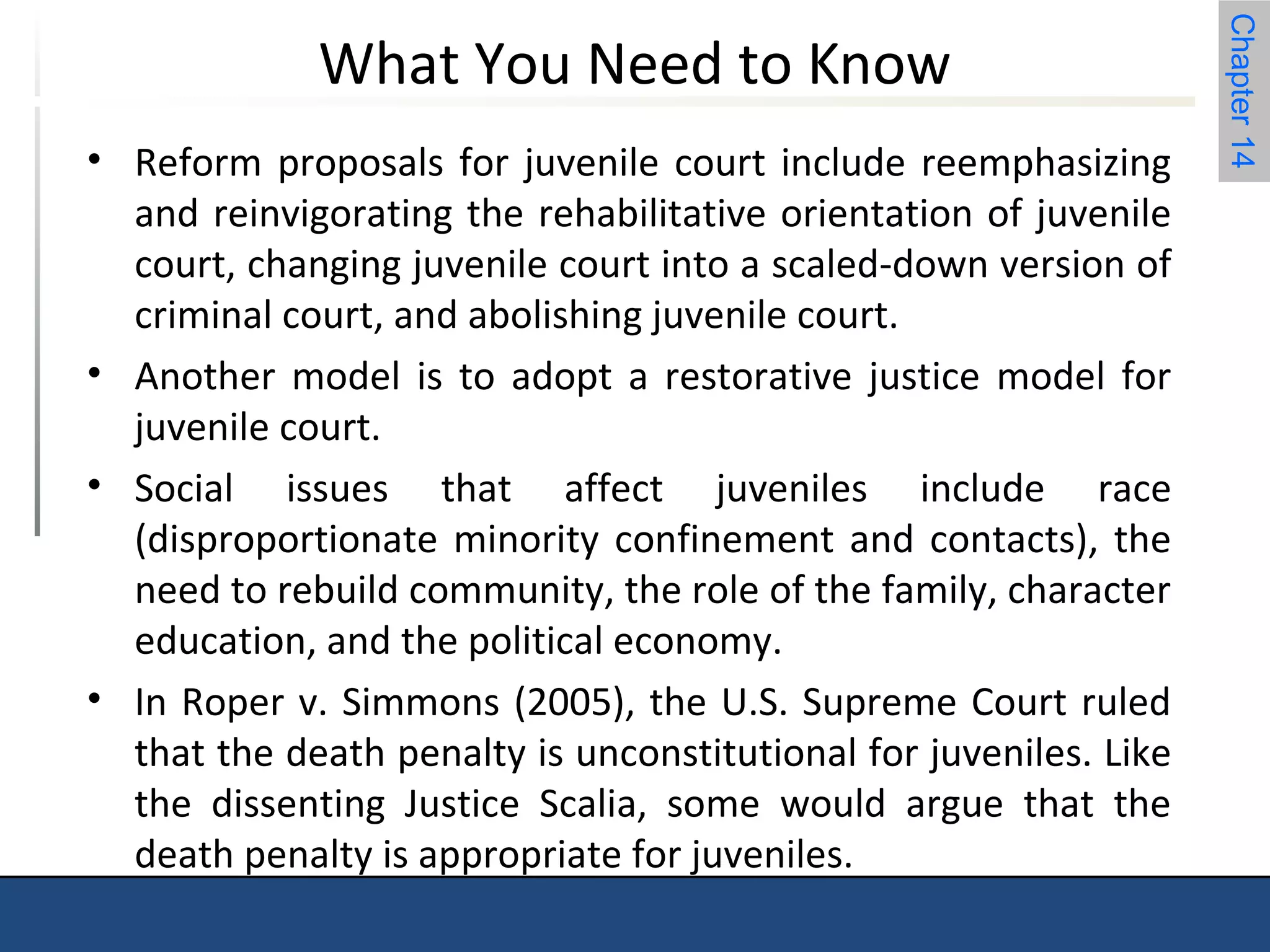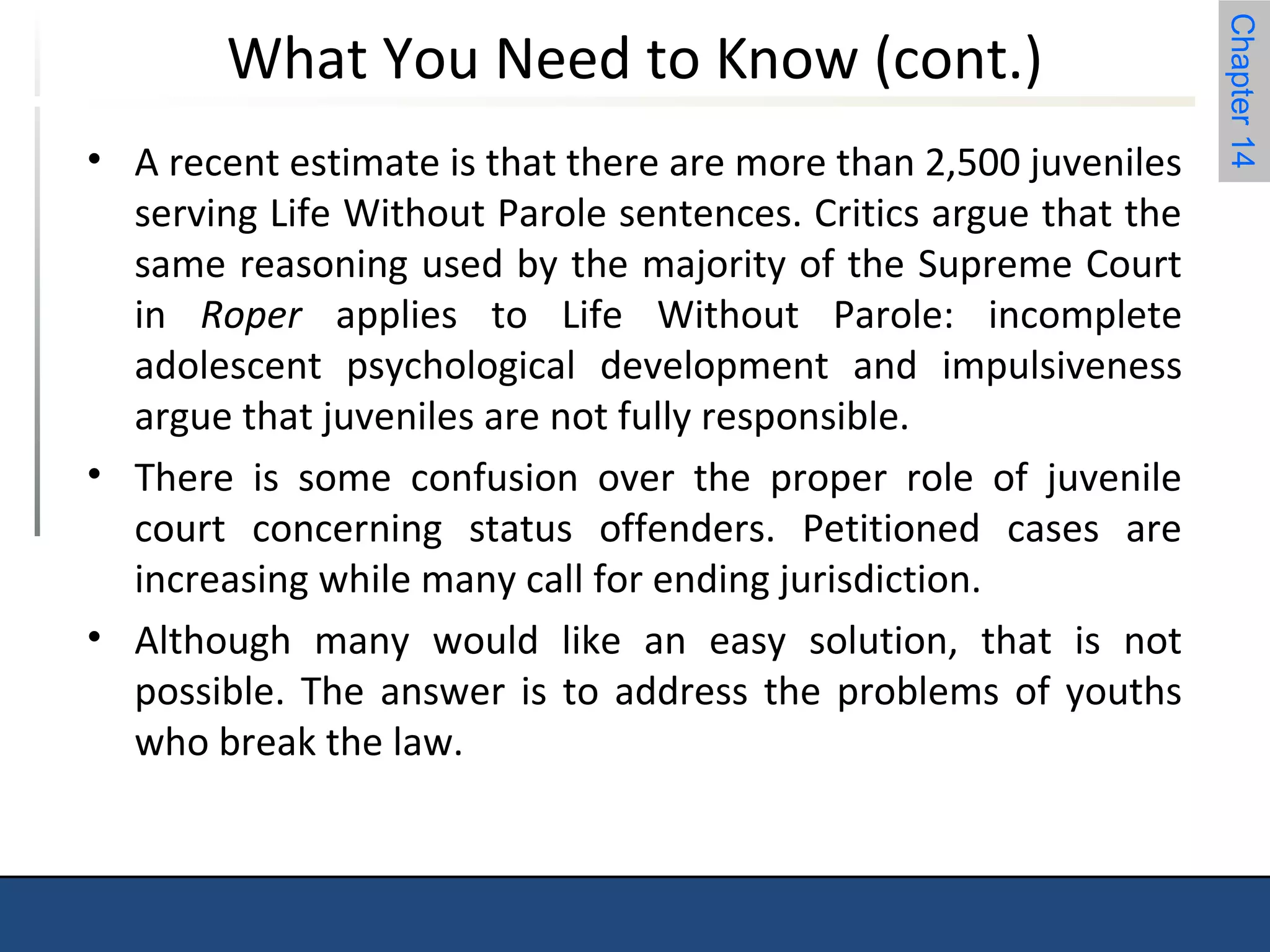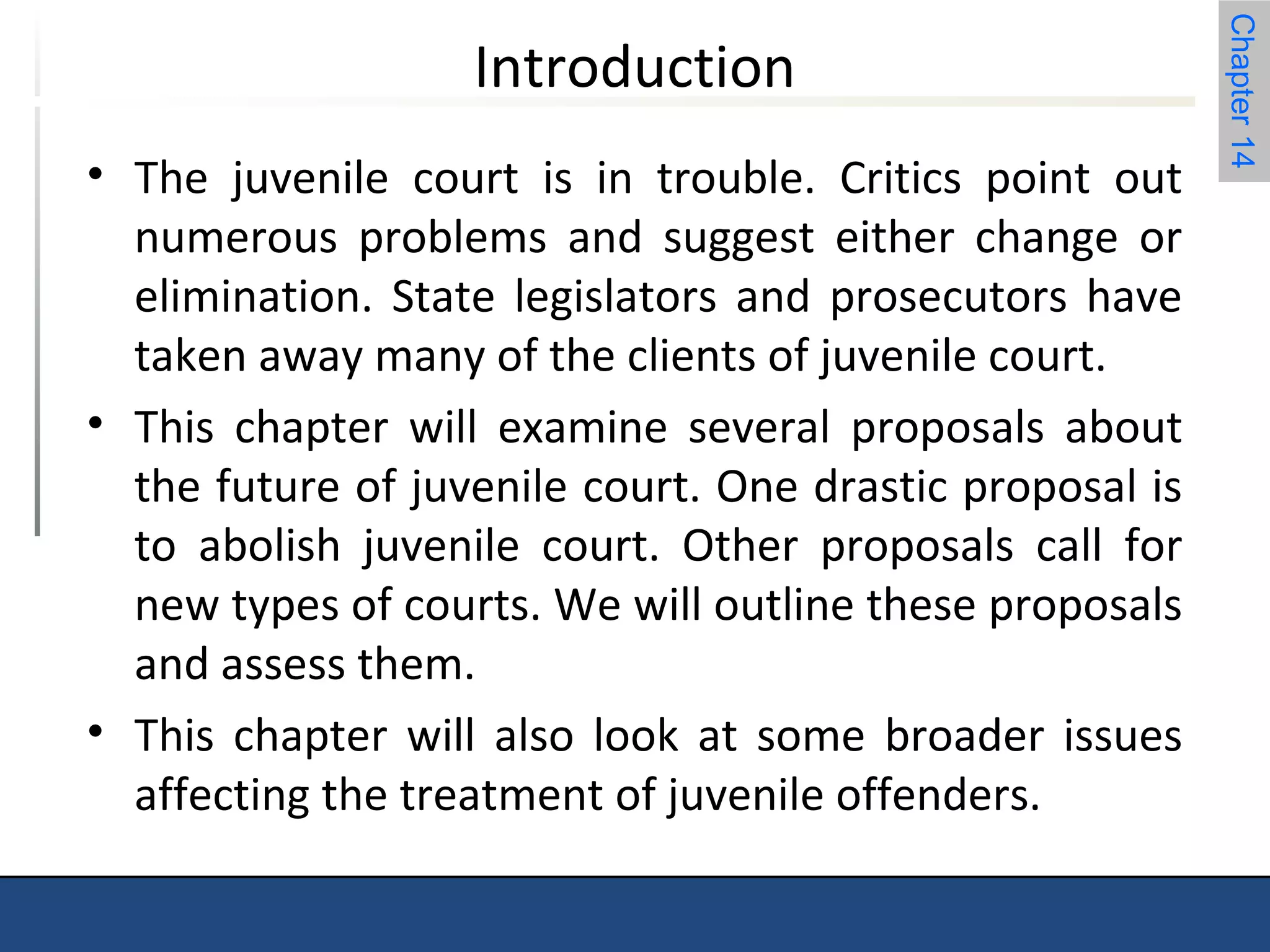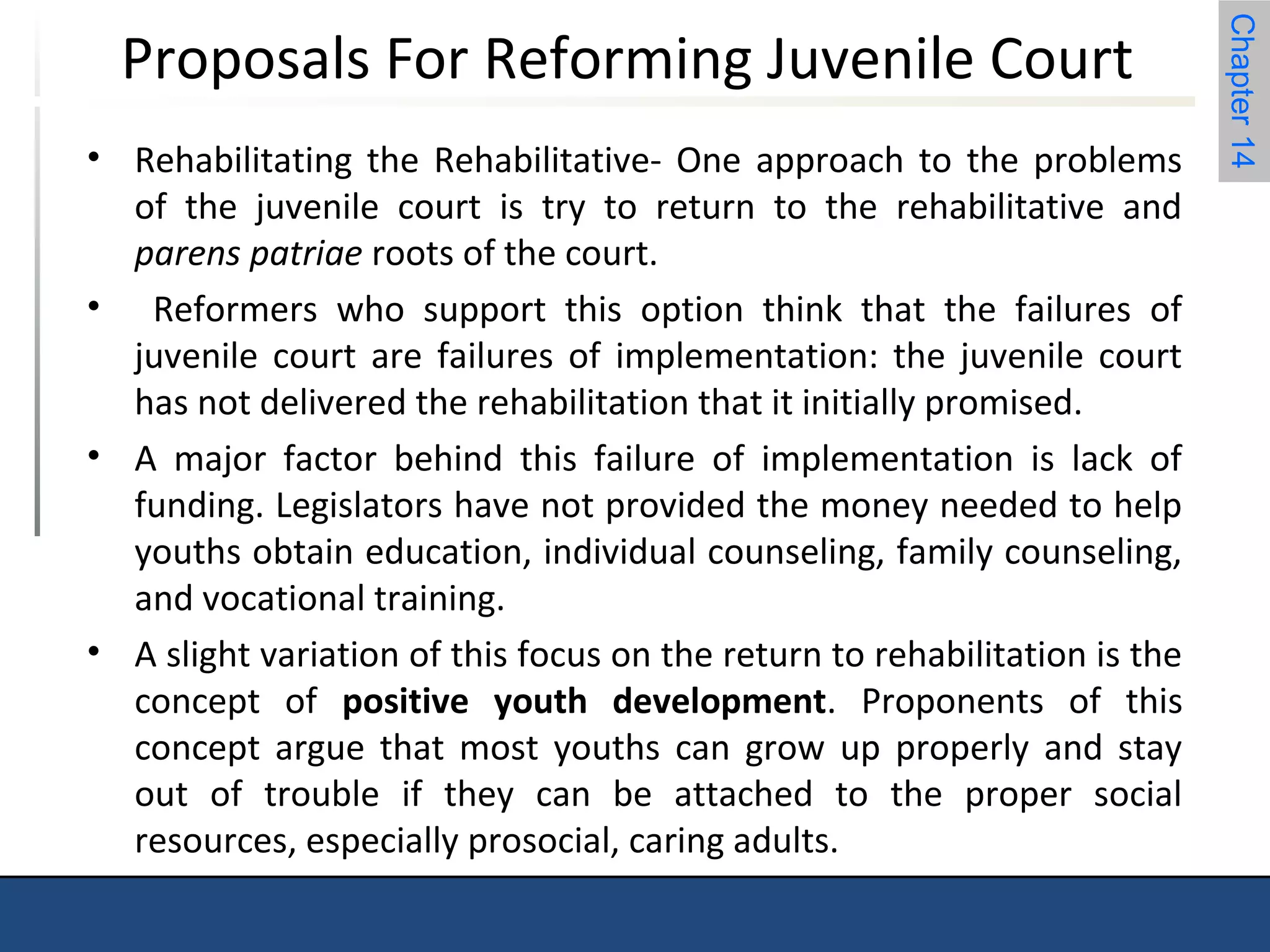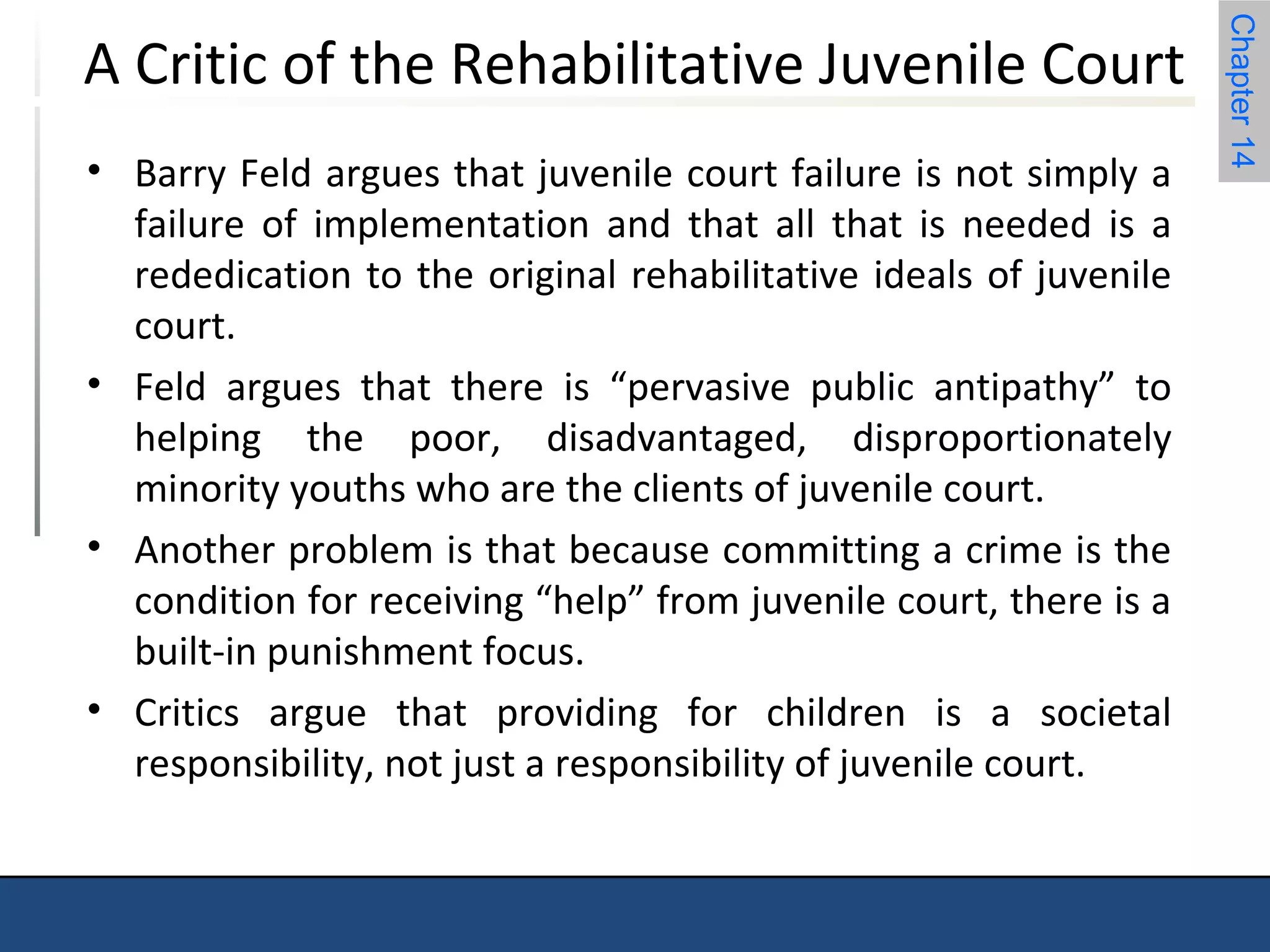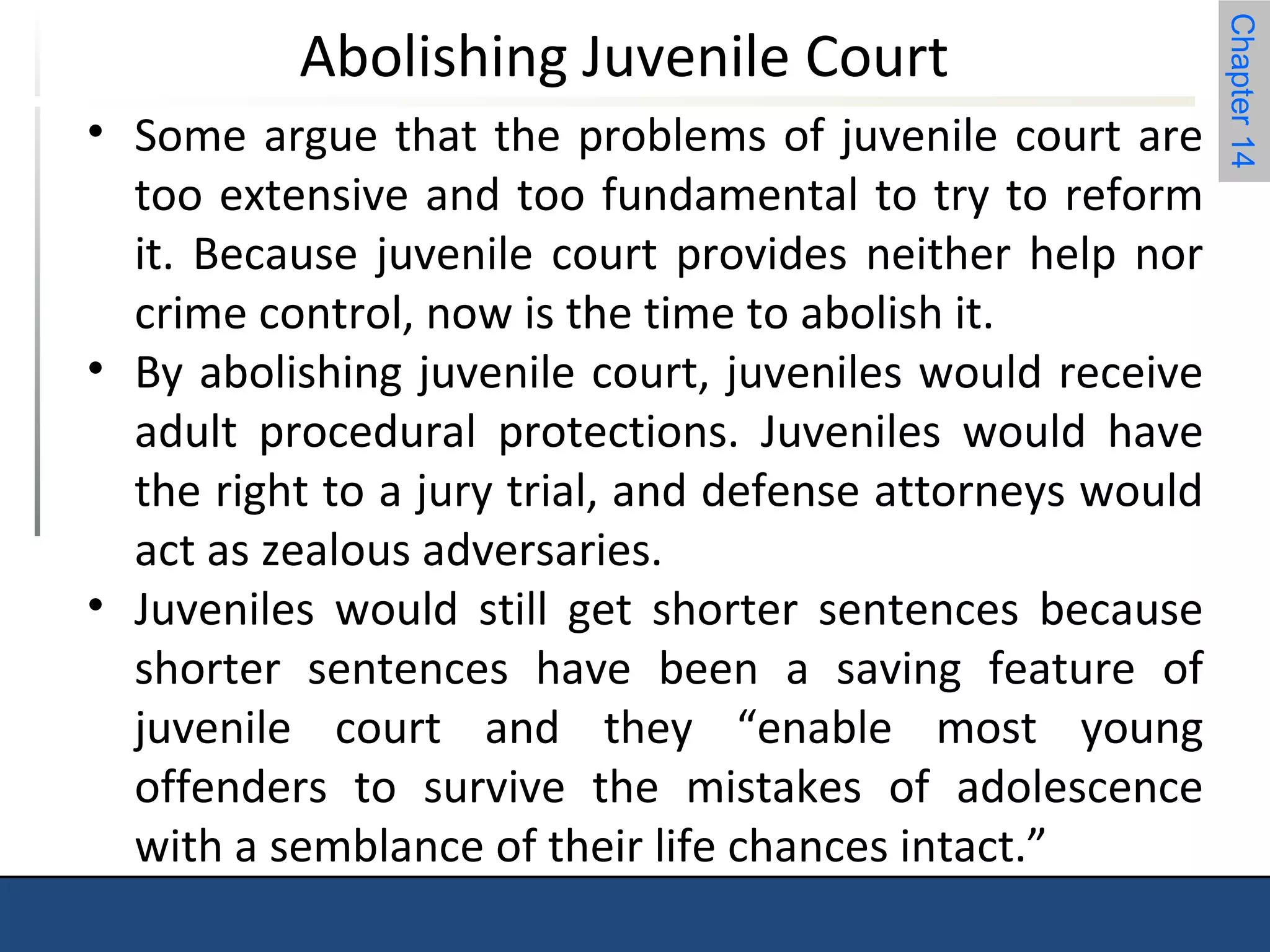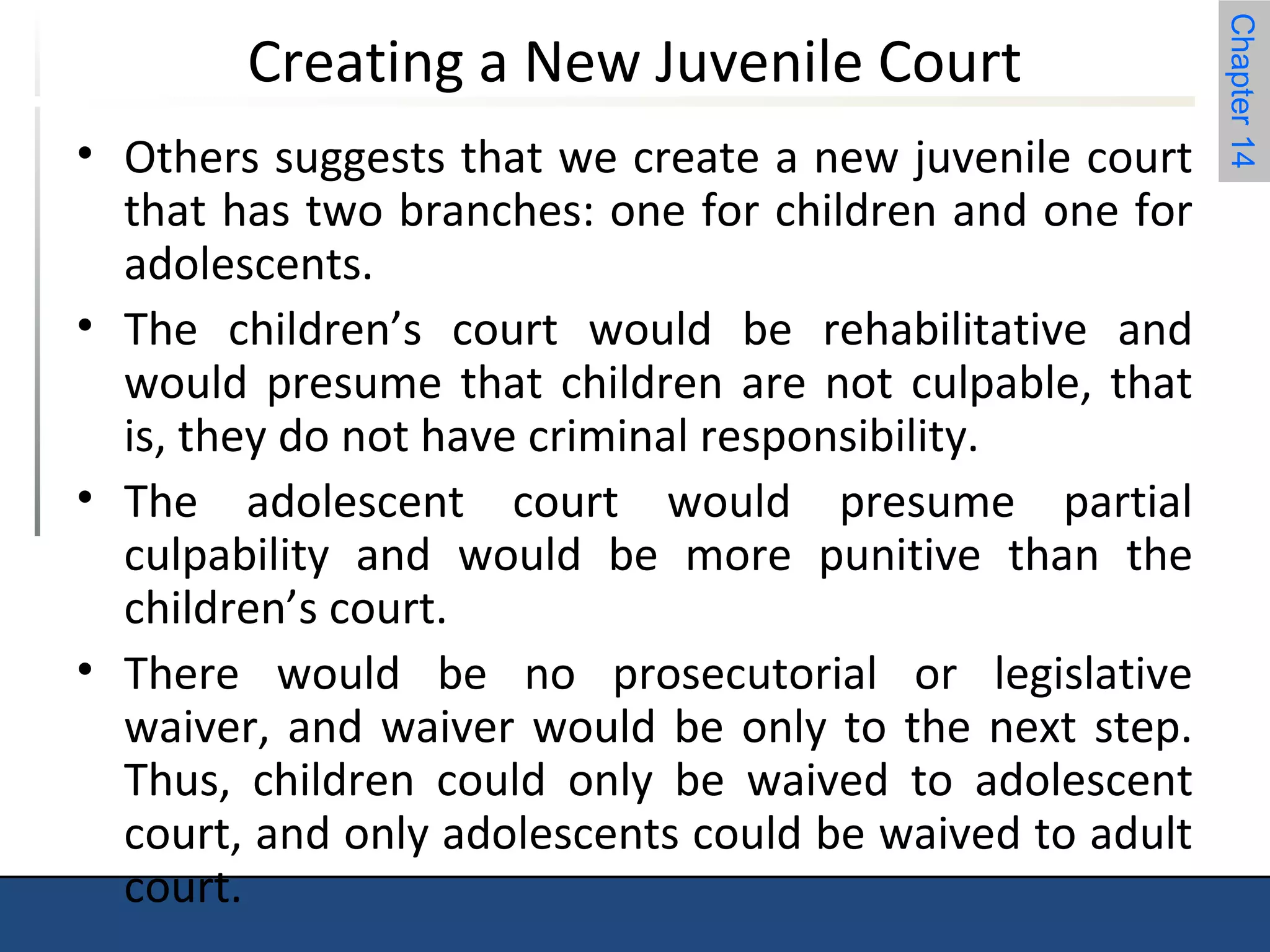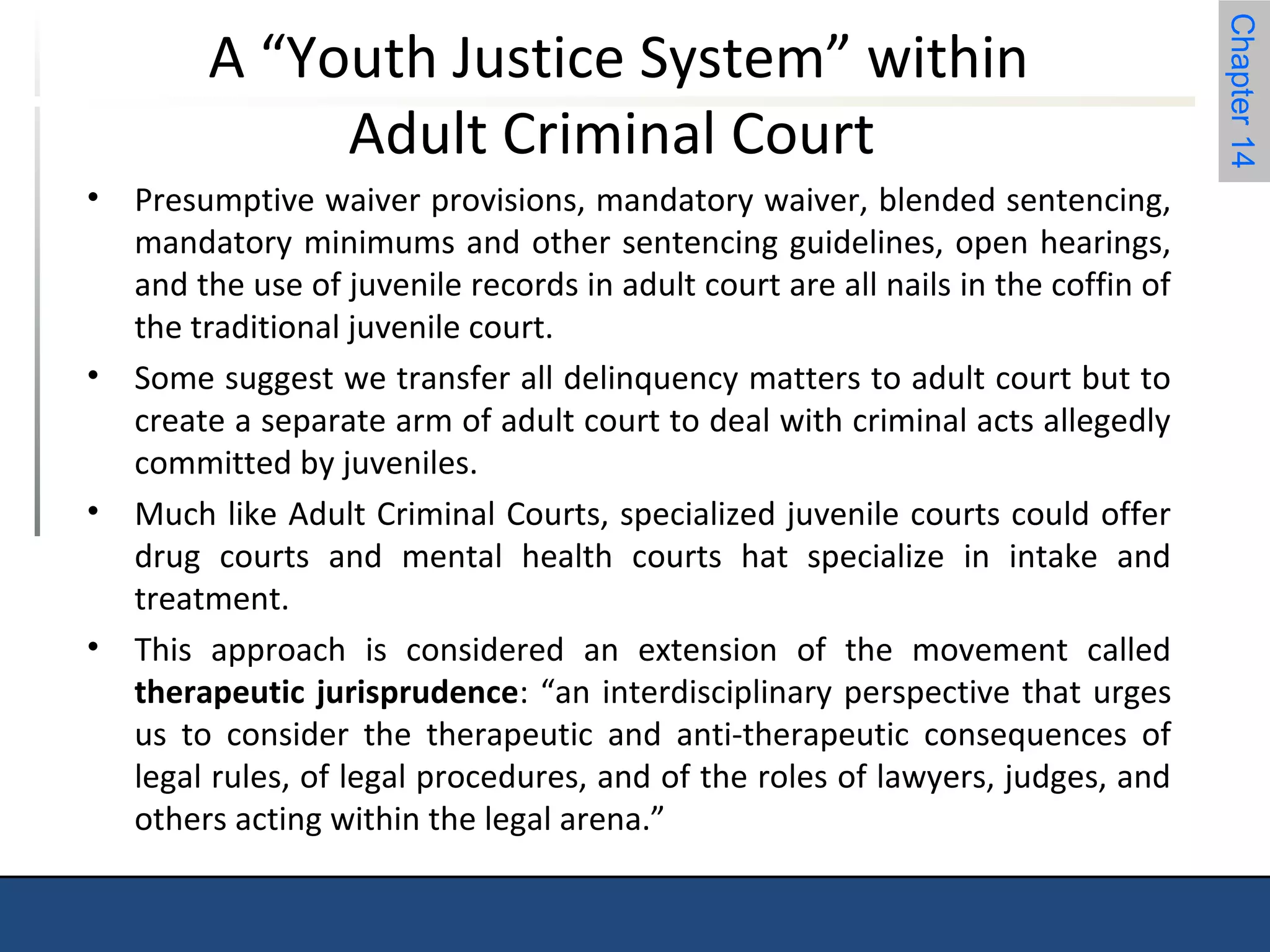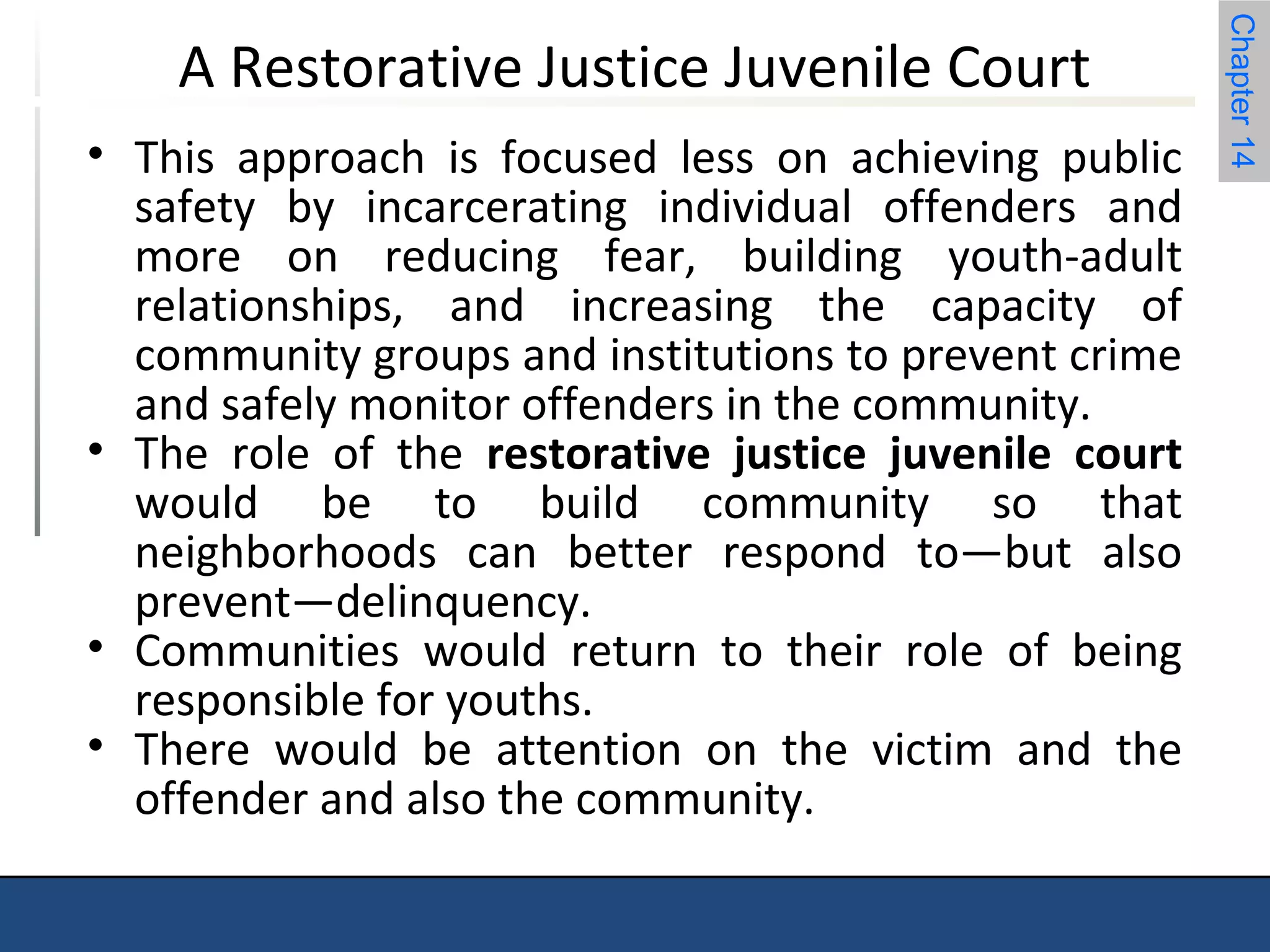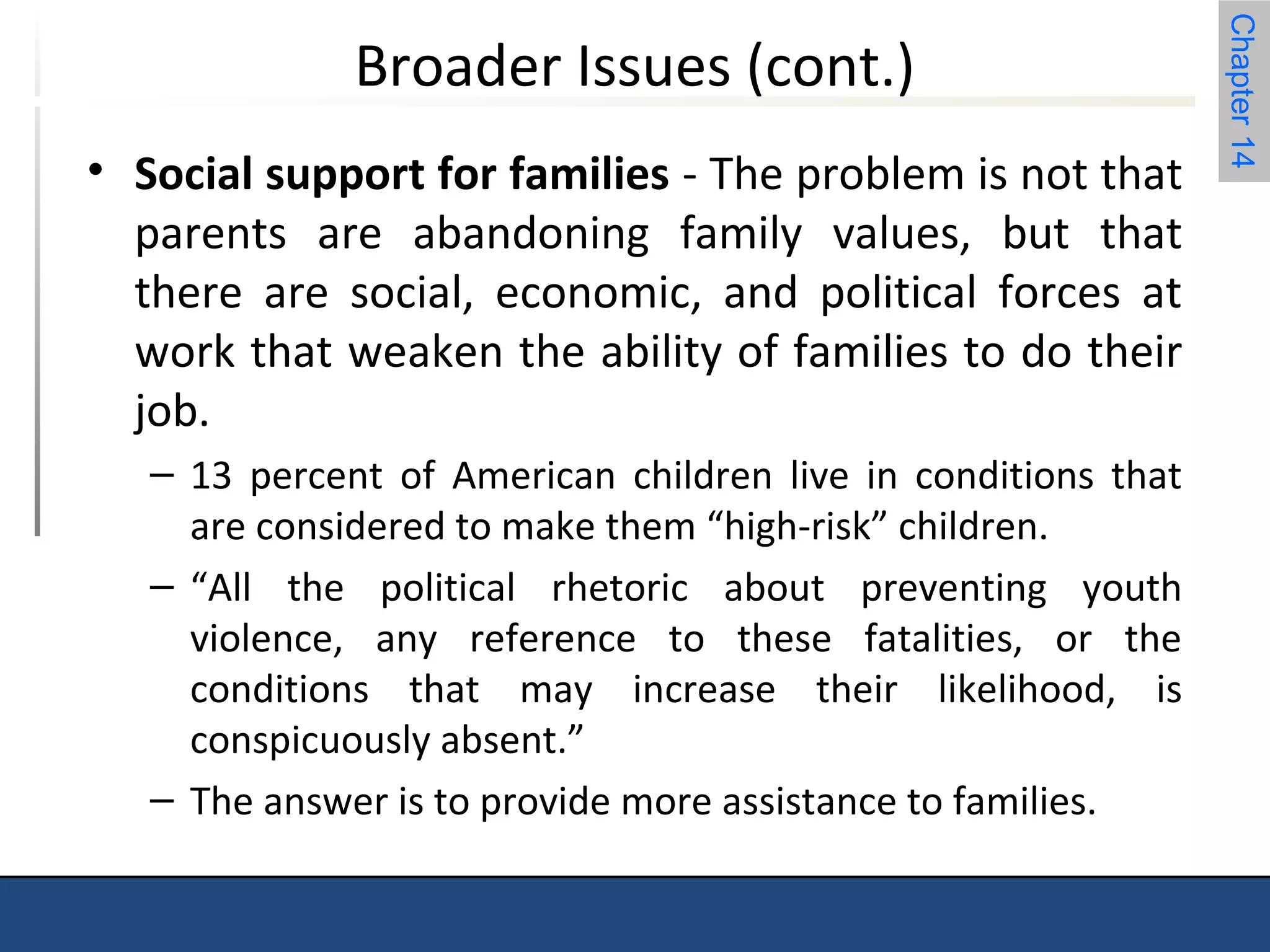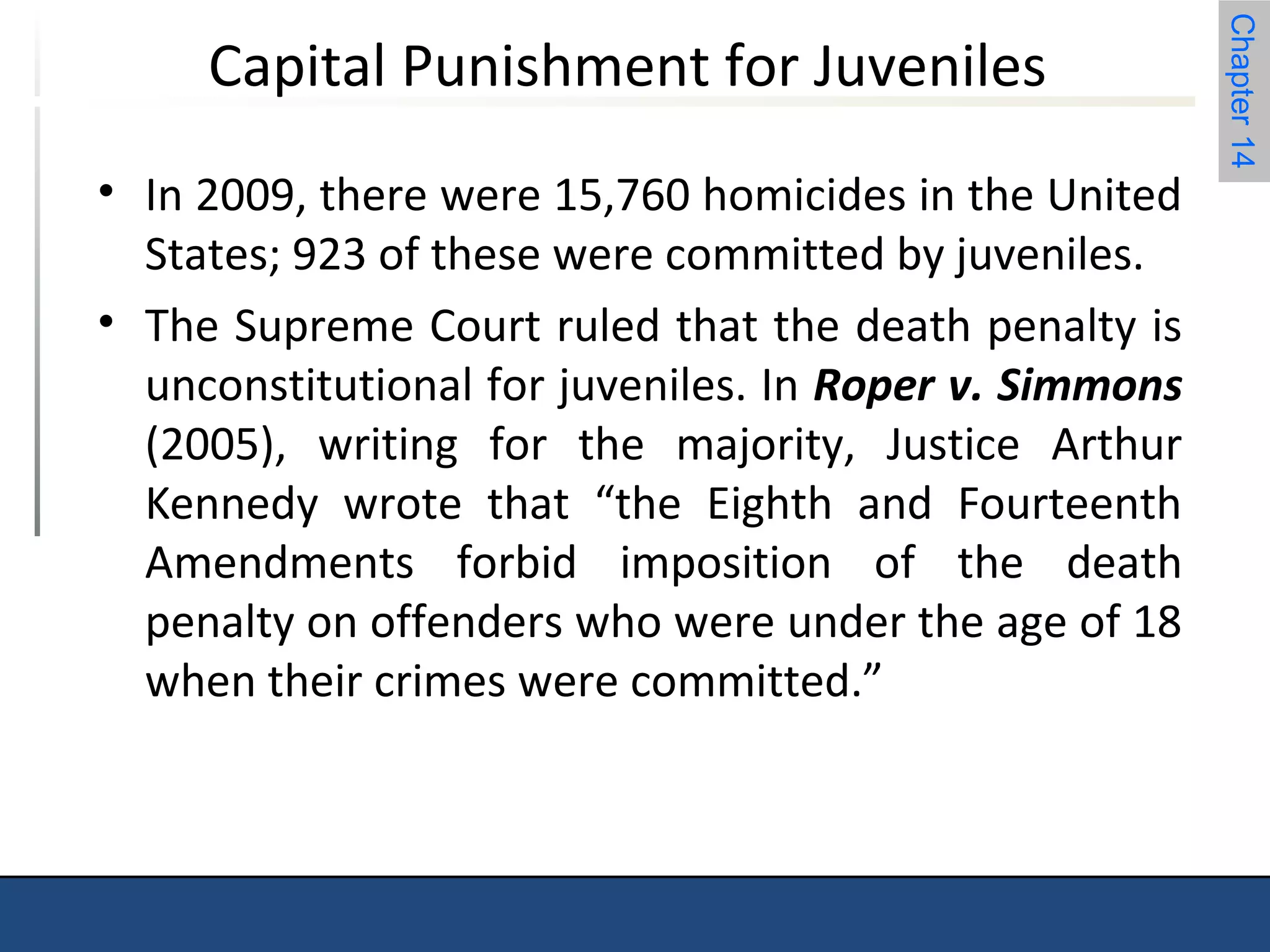This chapter discusses several proposals for reforming or replacing the juvenile justice system. These include reemphasizing rehabilitation, transforming juvenile court into a scaled-down criminal court, abolishing juvenile court, creating separate courts for children and adolescents, and adopting a restorative justice model. Broader issues that could impact juvenile offending like race, family decline, and lack of community are also examined.

